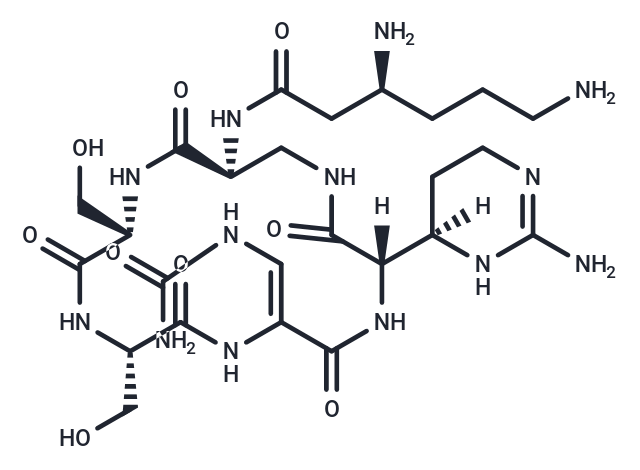Shopping Cart
- Remove All
 Your shopping cart is currently empty
Your shopping cart is currently empty

Tuberactinomycin compounds are essential components in the current combination of drugs used to combat Mycobacterium tuberculosis infections. These compounds target bacterial ribosomes and function by binding RNA and disrupting bacterial protein biosynthesis. Tuberactinomycin is produced by the actinomycete [Streptomyces puniceus], which binds RNA and inhibits protein synthesis in prokaryotes as well as certain forms of RNA splicing.

| Pack Size | Price | Availability | Quantity |
|---|---|---|---|
| 10 mg | Inquiry | 10-14 weeks | |
| 50 mg | Inquiry | 10-14 weeks |
| Description | Tuberactinomycin compounds are essential components in the current combination of drugs used to combat Mycobacterium tuberculosis infections. These compounds target bacterial ribosomes and function by binding RNA and disrupting bacterial protein biosynthesis. Tuberactinomycin is produced by the actinomycete [Streptomyces puniceus], which binds RNA and inhibits protein synthesis in prokaryotes as well as certain forms of RNA splicing. |
| Alias | BRN-0877989, BRN0877989, BRN 0877989, 6-(L-2-(2-Amino-1,4,5,6-tetrahydro-4-pyrimidinyl)glycine)viomycin, (R)- |
| Molecular Weight | 669.69 |
| Formula | C25H43N13O9 |
| Cas No. | 33137-73-4 |
| Storage | Powder: -20°C for 3 years | In solvent: -80°C for 1 year | Shipping with blue ice. |

Copyright © 2015-2025 TargetMol Chemicals Inc. All Rights Reserved.